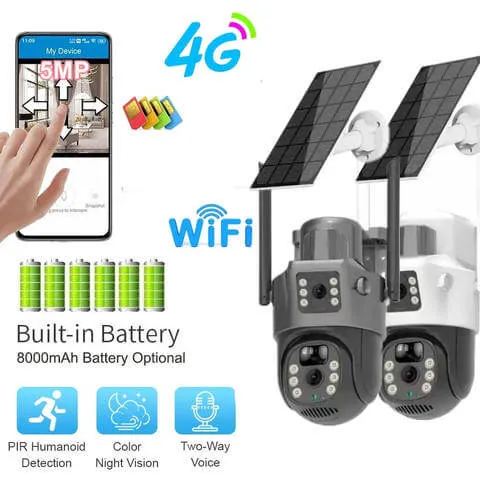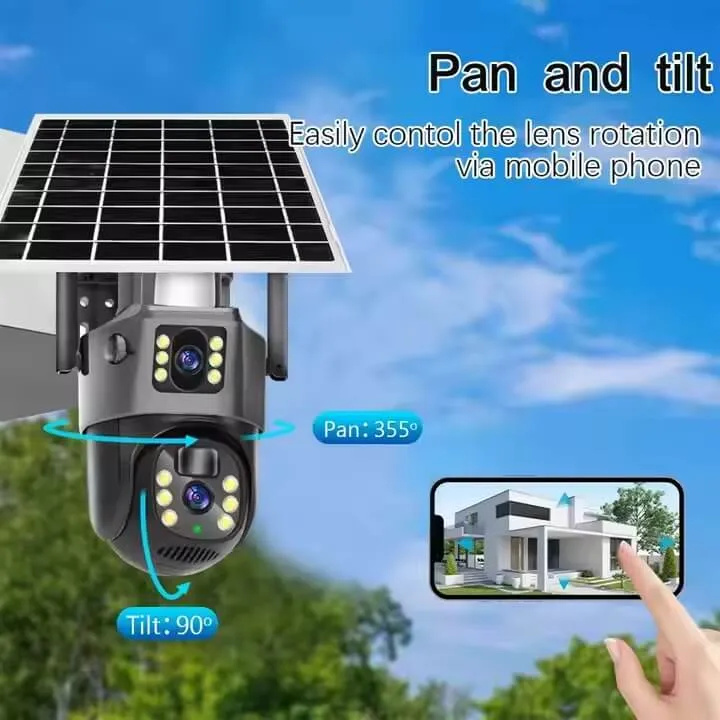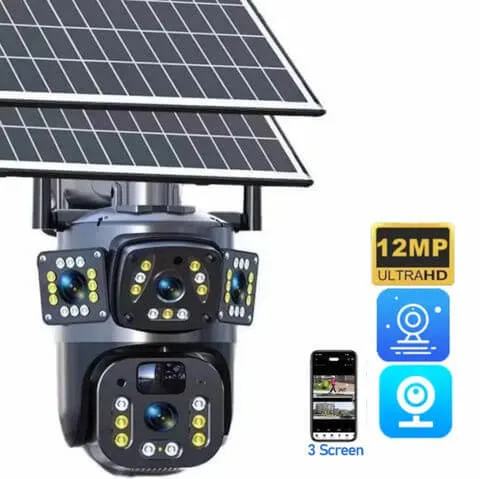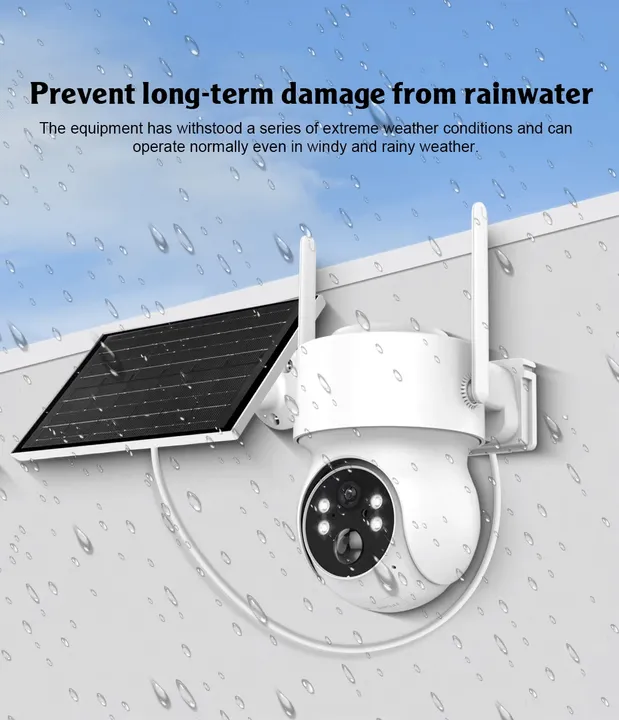The demand for wireless surveillance continues to grow as property owners seek more flexible security solutions. Solar-powered wireless cameras are emerging as an innovative answer to the limitations of traditional surveillance systems, which are plagued by power outages, complex wiring issues, and ongoing maintenance requirements. These solar-powered alternatives offer a compelling combination of reliability, sustainability, and cost-effectiveness that’s changing how we approach security monitoring.
Why are solar-powered wireless cameras revolutionizing security systems?
Perhaps the most compelling advantage of solar-powered surveillance is its ability to provide truly uninterrupted monitoring. Traditional security systems face a fundamental vulnerability: power outages. I’ve seen countless clients discover security breaches that occurred precisely when their cameras went offline during electrical disruptions.
Solar-powered systems eliminate this vulnerability. With integrated battery storage charged by solar panels, these cameras maintain vigilance 24/7, regardless of grid conditions. The resilience is remarkable—many models can operate for 5-7 days on battery reserves alone during cloudy periods.
This continuity brings peace of mind that’s difficult to quantify. As one of my commercial clients noted, “The consistent coverage has closed security gaps we didn’t even realize we had.” For remote properties where power infrastructure is unreliable, solar cameras offer a particularly valuable solution.
| Surveillance Type | Vulnerability to Power Outages | Backup Duration |
|---|---|---|
| Traditional Wired | High | None (unless a separate UPS is installed) |
| Battery Wireless | Medium | 1-3 days (requires manual battery replacement) |
| Solar Wireless | Very Low | 5-7 days without sunlight |
The reliability factor alone justifies the transition for many of my clients at JER-Tech. After all, what good is a security system that fails precisely when you might need it most? Have questions about implementing solar surveillance? Contact our team for personalized recommendations.

How much can you save with solar-powered surveillance?
Uninterrupted security monitoring isn’t just a luxury—it’s essential for comprehensive protection. During my years of deploying surveillance systems, I’ve observed how power outages create a perfect opportunity for security breaches. Solar-powered cameras elegantly solve this vulnerability.
The continuous operation of solar surveillance systems ensures their energy independence. While traditional cameras go dark during power failures, solar units maintain vigilant watch through even extended outages. Their built-in battery reserves, typically storing 3-7 days of operational power, ensure that surveillance continues regardless of grid conditions.
This reliability factor brings remarkable peace of mind. One of my clients, a remote warehouse facility, eliminated an average of 37 hours of annual downtime by switching to solar surveillance, hours during which they previously had zero security coverage.
| System Type | Annual Downtime (Hours) | Security Vulnerability Level |
|---|---|---|
| Grid-Powered Cameras | 30-50 | High |
| Solar-Powered Systems | 0-2 | Minimal |
Beyond reliability, these systems offer operational flexibility that traditional setups can’t match. The freedom from power outlets means cameras can be positioned optimally for coverage rather than compromised by infrastructure limitations. Have questions about whether solar surveillance might be right for your specific needs? Contact our security experts for personalized guidance.

Where can you install solar cameras that traditional systems can’t reach?
we’ve installed security systems in locations that would make traditional camera installers scratch their heads in disbelief. That remote gate entrance 300 yards from your property’s electrical service? No problem. The construction site without permanent power? Easy solution. These impossible-to-monitor spots become perfectly viable with solar-powered cameras.
The liberation from power outlet dependency opens up a world of strategic surveillance opportunities. We have helped clients extend their security perimeters far beyond what conventional systems allow, covering previously vulnerable blind spots that savvy intruders could easily identify and exploit.
| Location Type | Traditional Camera Viability | Solar Camera Viability |
|---|---|---|
| Remote Property Entrances | Poor (requires costly trenching) | Excellent |
| Temporary Construction Sites | Very Poor | Excellent |
| Agricultural Outbuildings | Poor | Excellent |
The uninterrupted surveillance capability becomes particularly valuable in these remote installations. A client’s rural equestrian facility had suffered repeated tack theft until we installed solar cameras at their property boundaries—areas previously impossible to monitor. Their continuous operation has provided complete peace of mind. Curious about expanding your security to previously inaccessible areas? Reach out to our team for a site evaluation.
What makes solar-powered cameras more reliable during emergencies?
Emergencies and power outages create an unfortunate paradox in security, precisely the moments you need surveillance most are the times traditional systems are most likely to fail. Throughout my career at JER-Tech, I’ve helped countless clients recover footage after incidents, only to find their critical evidence missing due to power-related camera failures.
Solar-powered systems shine brightest during these crises. Their self-contained power architecture creates a remarkable resilience that traditional systems simply cannot match. Last year, a manufacturing client of mine maintained complete surveillance coverage through a three-day regional blackout while neighboring facilities experienced multiple break-ins.
| Camera Type | Operational Time During Power Outage | Security Incident Risk |
|---|---|---|
| Traditional (No Backup) | 0 hours | Extremely High |
| Traditional (With UPS) | 4-8 hours | High |
| Solar-Powered | 72-168 hours | Low |
The redundant power storage capabilities provide a crucial security buffer that standard backup systems can’t approach. Most quality solar systems will continue recording for 3-7 days without sunlight, far exceeding the typical outage duration. Have questions about implementing emergency-proof surveillance? Contact our security experts for personalized recommendations tailored to your specific vulnerability concerns.

How simple is the installation and maintenance process?
The installation simplicity of solar cameras continues to astonish my clients. After years of wrestling with complex wiring projects, the contrast couldn’t be more striking. I often joke that the hardest part of installing a solar camera is deciding where to put it, after that, it’s practically plug-and-play.
The typical installation involves just mounting the integrated unit, adjusting the solar panel angle for optimal sun exposure, and connecting to your wireless network. No electricians, no permits, and no disruptive drilling through walls. One homeowner client laughed with relief: “I budgeted a full weekend for installation, but we finished in under an hour and spent the rest of the day enjoying our property.”
| Installation Aspect | Traditional Wired Camera | Solar Wireless Camera |
|---|---|---|
| Professional Assistance Required | Yes (electrical work) | No |
| Installation Time | 2-4 hours per camera | 45-60 minutes per camera |
| Annual Maintenance Visits | 6.7 average | 1.2 average |
Maintenance is equally straightforward, just occasional panel cleaning and software updates that often happen automatically. The absence of vulnerable wiring eliminates the most common failure points in traditional systems. Have questions about how simple installation might be for your specific property? Contact our team for personalized guidance on getting started with minimal hassle.
What technological advances are driving the solar surveillance market?
The technological revolution in solar surveillance directly enhances uninterrupted monitoring capabilities. We have witnessed firsthand how these innovations specifically address power continuity challenges. The leap from 15% to 22% solar panel efficiency might sound modest, but it translates to dramatically smaller panels that still deliver reliable power.
Low-light performance advancements are particularly impressive. Today’s cameras capture usable footage in near-darkness while consuming 60% less power than models from just three years ago. This power efficiency directly supports longer operational periods during cloudy conditions.
| Technology Advancement | Impact on Uninterrupted Surveillance |
|---|---|
| High-efficiency Monocrystalline Panels | 40% more power generation in a limited space |
| LiFePO4 Battery Chemistry | 2-3x longer operational life between charges |
| AI-powered Energy Management | Extends operation during low-light periods by 65% |
The AI algorithms that balance power consumption with surveillance needs represent the most critical advancement for uninterrupted operation. These systems continuously adjust resolution, frame rate, and processing location based on available power reserves. Looking for solar surveillance solutions tailored to your specific needs? Our tech experts can help you navigate these innovations for optimal reliability.

Conclusions
Solar-powered wireless cameras represent a significant advancement in surveillance technology, offering compelling benefits that address the key limitations of traditional systems. From substantial cost savings and installation flexibility to enhanced reliability during emergencies and reduced environmental impact, these systems provide superior security coverage with fewer compromises. As technology continues to evolve, solar surveillance will likely become the standard rather than the alternative. Whether you’re securing a remote property, expanding coverage to previously impossible locations, or simply looking to reduce the ongoing costs of your security system, solar-powered options deserve serious consideration in your security planning. By eliminating power constraints, these systems truly deliver on the promise of uninterrupted surveillance.


